Designer's Voice vol.4
2022.1.5 | Designer's Voice vol.4
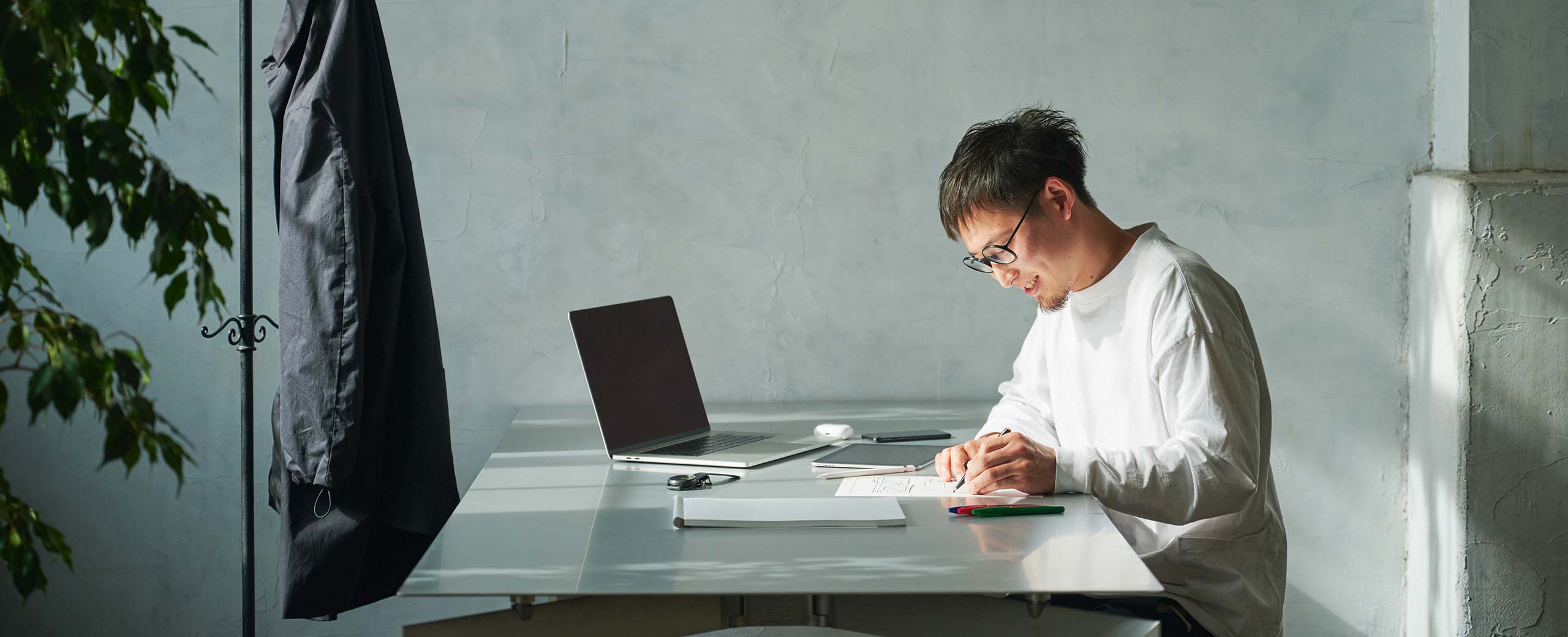
UI designer You Oki.
With his belief in the power of design, You Oki passionately pursues designs that connect people not only to the product, but also to each other.

A design for mutual understanding
A user interface, or UI for short — nowadays, this is something that touches nearly all of our lives. Whether in our smartphone, a PC or video game system, it exists in all of the electronic devices that surround us. Most obviously in the buttons, icons and message windows that are displayed on the screen that we normally use unconsciously, but without them, only a select few would have been able to handle these devices.
Connecting people and products through screen design. Giving users what they want, or even providing results beyond their expectations. These are the goals that we aim to achieve as UI designers.

Good designs come from communication
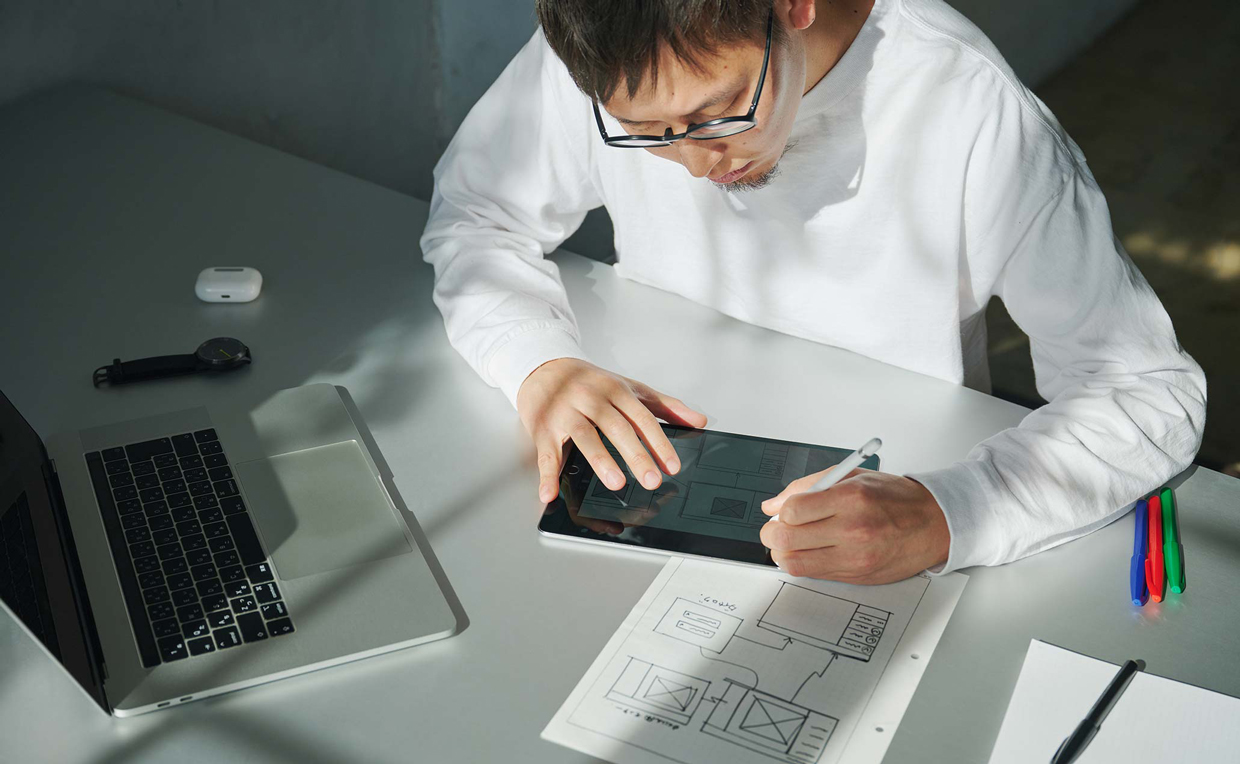
Deciding the screen layout or designing icons is just a part of our work though. In order to understand what the product can and can't do, we maintain in-depth communication with the developers. We also try to dig deep into what the users really need and clarify their current issues.
In that sense, our work requires a sense of delicacy as we stand between the two different worlds of human and device. A truly effective user interface can't be achieved unless we carefully decipher what lies deep in the heart of each person — things not always expressed explicitly in the developers' wishes or users' demands.
Design is not just something that we see but also a means of communication, and I feel every day that this comes from interaction between people.

The power of visuals
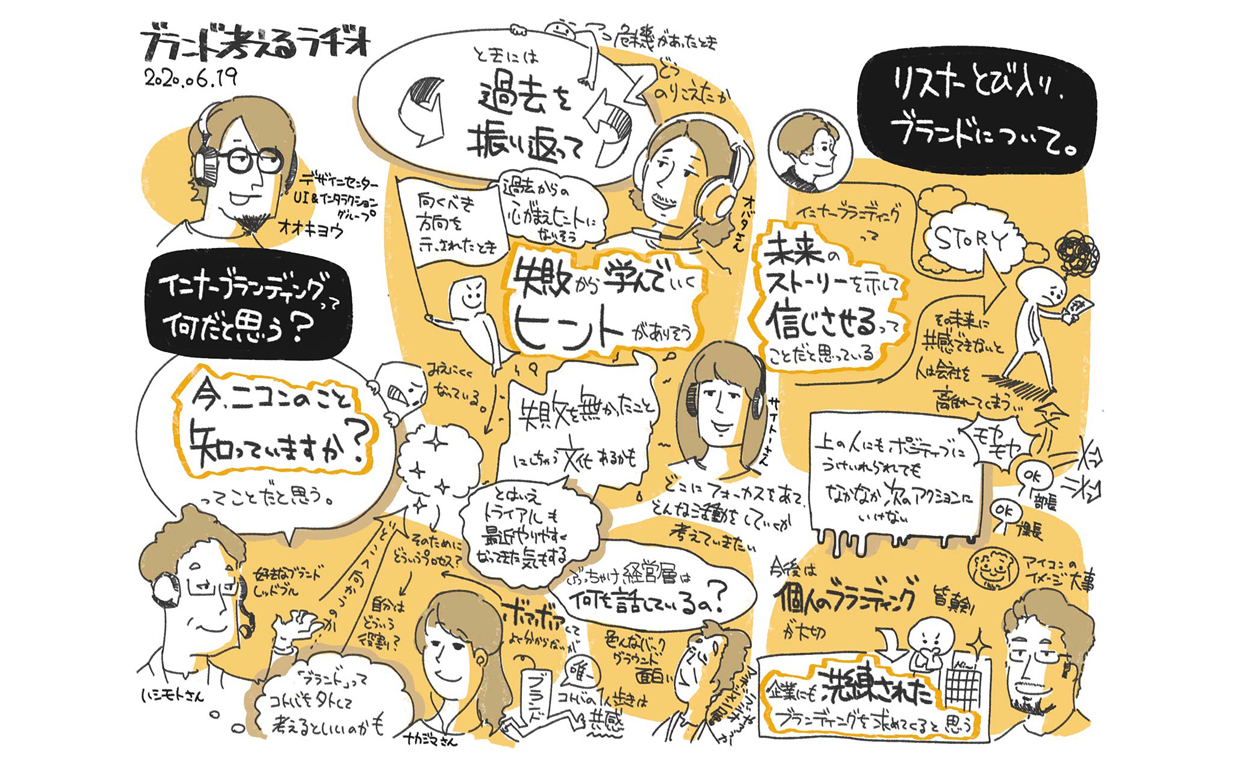
There's something that I've noticed.
We all know that communicating with an electronic device can be difficult, but making ourselves clearly understood is not always easy even between humans who speak the same language.
For example, the slightest misunderstanding can cause disagreement and send us in the wrong direction when we should be working together and aiming for the same goal. Opinions that could have made the discussion more meaningful are sometimes left unsaid. Something that would have been relevant to the other person might be overlooked.
How can we solve these problems in our work and everyday lives using the power of design? "Graphic recording" was the answer that I came across. This is a method of recording the content of a meeting in a graphical form: in short, it's graffiti.
Even though it takes some courage for us, as designers, to work on a task while it is still incomplete, especially when I'm not particularly a good artist myself, I believe there's great meaning in transforming words that otherwise would've disappeared into a drawing — something that can be seen and grasped immediately with our eyes. In this way, we can check if we're on the right path towards customers' needs or if we are leaving an important idea behind, all at a glance.
Instead of endless discussion as we try to put everything into words, this method of instantly forming the idea into a visual shape, even if it's incomplete, stimulates discussion and helps change the user interface into something better.
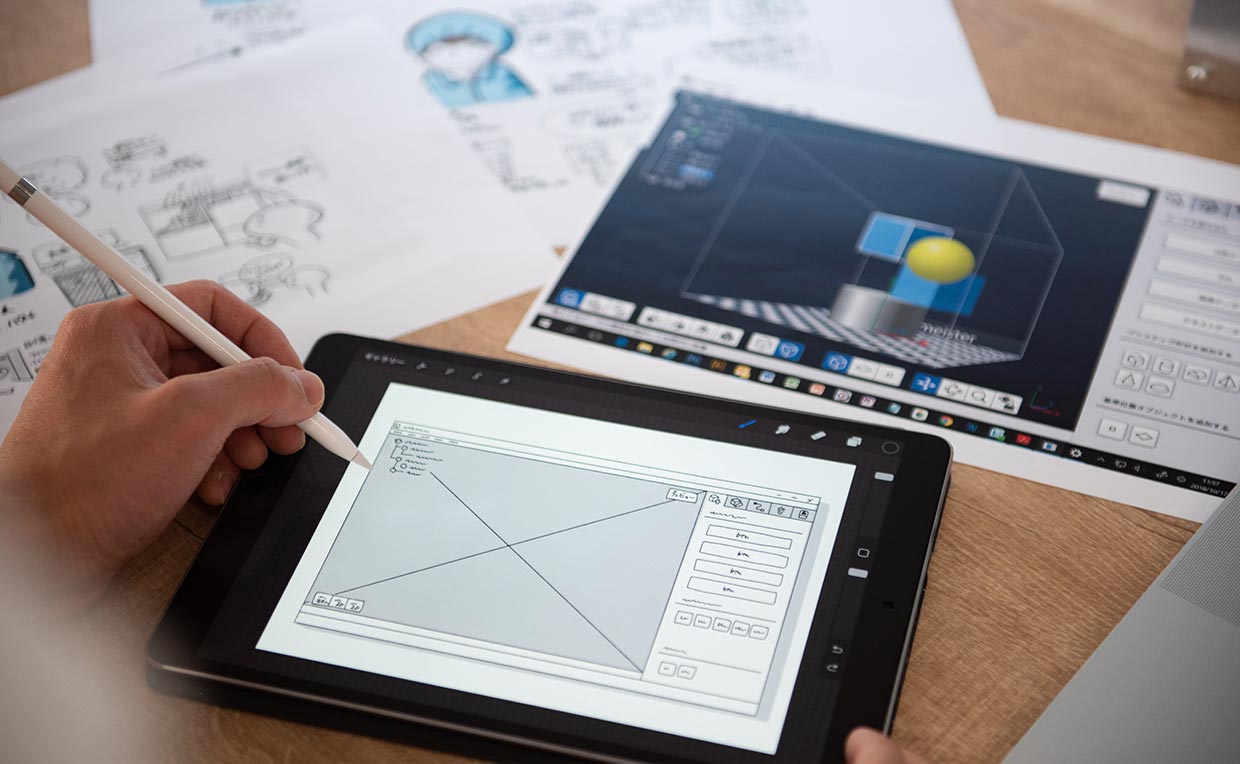
For Nexiv Note, an item of software instructing how to use an image measuring instrument that normally requires time to become accustomed to, we adopted an agile development process in which we created the prototype directly from the development stage while verifying its usage. For the Lasermeister 100A, a metal processing machine intended to allow anyone to model metal freely, the team pushed ahead with the design and implementation follow-up via hand-drawn sketches and mockups.
Even if the functions are incomplete or user insight is not yet clear, our discussions should be based on looking at a model that we can all perceive. Only through this process can we approach Nikon's ideal, which is to create a finished product that is comfortable to employ and strongly stimulates the user to master it and advance.
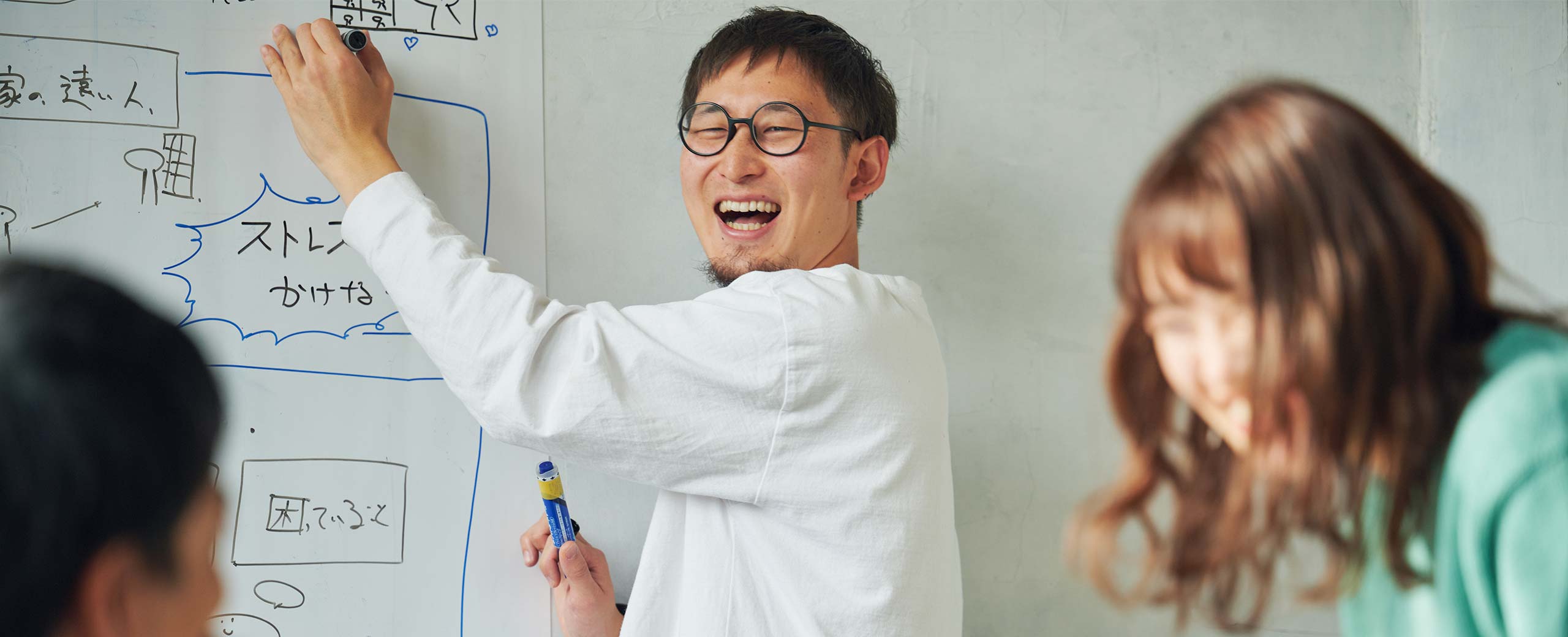
Allowing more freedom in communication
I have a secret ambition: to encourage a culture that lets us utilize graffiti more freely, not just within Nikon but also elsewhere.
I think it's a shame that our sense of resistance — including our preconception that we need to organize our ideas before sharing them in meetings or that we should only report, share or advise with explicitly clear intentions — can hold us back from advancing possibilities for innovation.
I once visualized our CEO's words and shared them within the company and on an internal portal. I was surprised at the number of comments and reactions I received from so many people. From this experience, I am now confident that I can create an environment where people can share their ideas freely beyond hierarchical relationships and different departments.
It doesn't have to be 100% complete. If we can easily form our thoughts into shapes and actively put them forward, there will be many more chances for those previously obscured ideas, once thought meaningless, to see the light of day. Not only that, but once the ideas take shape, we can nurture and grow them still further with the help of other people both internally and externally.
You don't need to be a designer. It doesn't matter if you're good at drawing or not. If we can encourage people to draw their own interface for communication and expand their ideas, turning Nikon and our society as a whole into a better place may be possible.
Little by little, I'm starting to practice what I can do with the graphic recording system; such as lecturing about the system at internal personnel training, as well as utilizing it for a collaboration with the local administration and other businesses that are active in the community.
We aim to continue pursuing the possibilities of design in order to take advantage of what we have cultivated through communication between products and users, and utilize it to benefit communication between humans too.
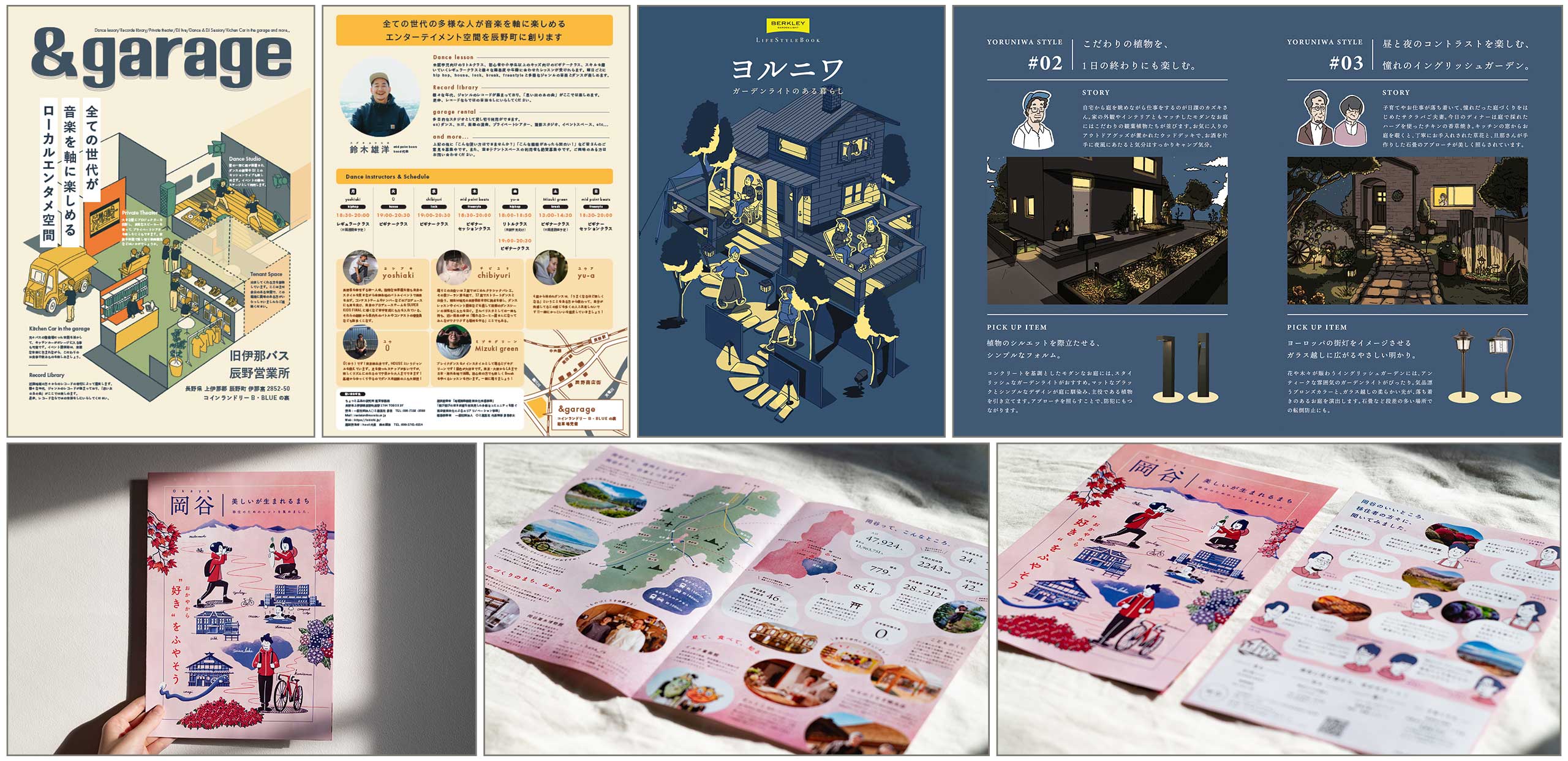
Works
- Collaborative designs with students for the future
- Aiming for Vision 2030 together with the entire company
- The Future of Nikon Design
- Communicating the value of our next-generation technologies
- Designer's Voice vol.4
- Z fc
- Designer's Voice vol.3
- NIKON PLAZA RENEWAL
- ECLIPSE Ei
- Designer's Voice vol.2
- C3 eMotion
- SnapBridge
- NIKKOR Z Lenses
- Designer's Voice vol.1
- Z 7/Z 6
- Creative Skill Up
- ECLIPSE Ti2
- KeyMission series
- COOLPIX W100
- MONARCH HG
- D5 / D500
- ECLIPSE Ts2 / Ts2R
- NEXIV VMZ-R
